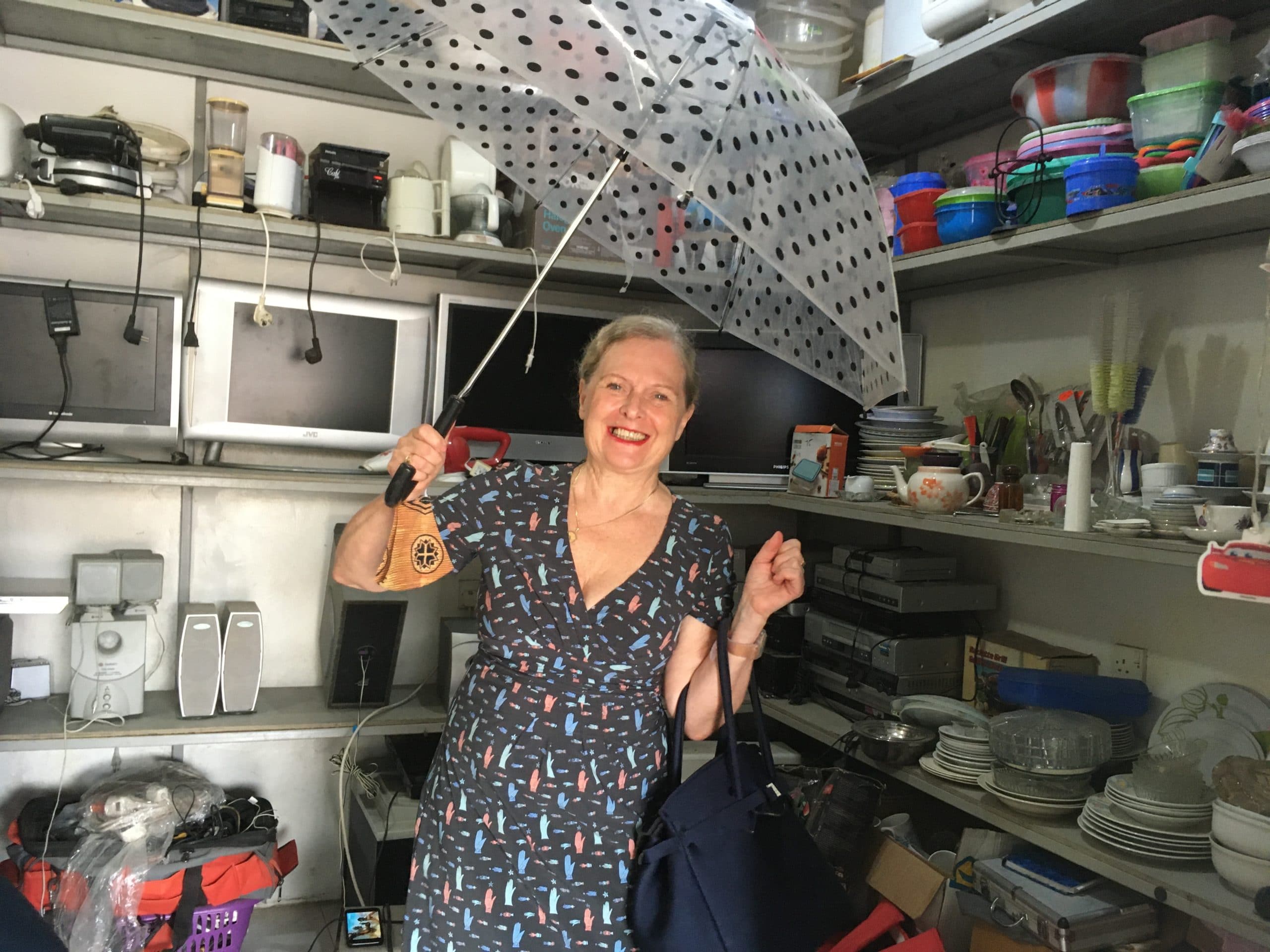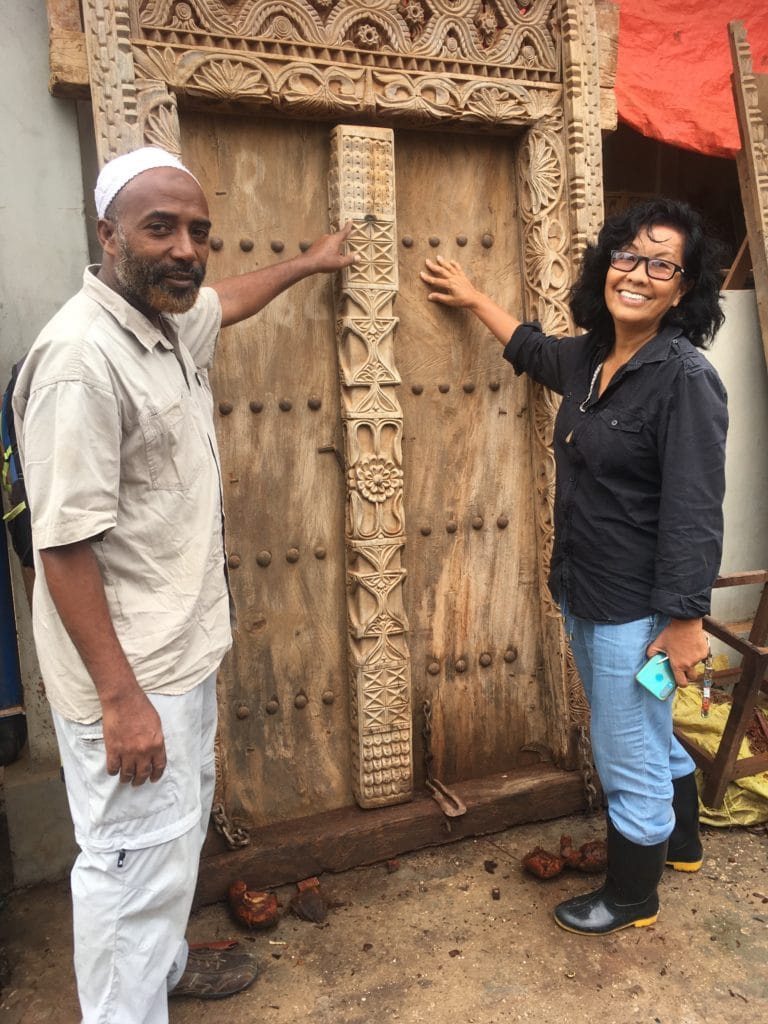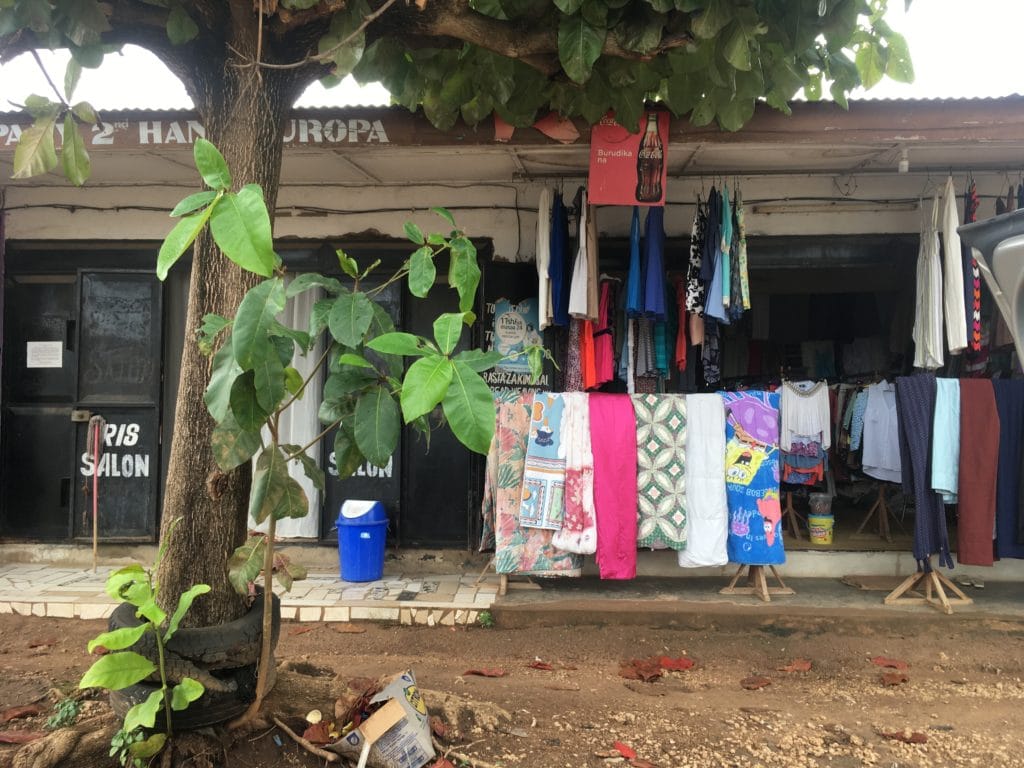
On the vintage shopping trail with 4 great stops
Where neither Gucci nor Zara Home are to be found, second-hand goods for home and beauty are an alluring alternative. Discover hidden vintage gems outside Stone Town with guide Said.
The teapot with a coral-coloured flower pattern, stamped “Mason’s China” on the bottom, is lovely but lacks a lid. “Could be from the fifties”, says Bernadette Kirsch. The see-thru umbrella has a shaky handle, which will certainly not withstand major kuzi or kaskazi storms. “Never mind”, my shopping companion advises me, “you can use the teapot for watering flowers instead of a plastic watering can, and you could nicely grow your seedlings under the umbrella”. There are three of us, Bernadette, our guide Said Suleiman and myself - looking for some nice old stuff!
Form follows function (designers say), and women like beautiful forms. They are ready to render vintage items a second life, often letting them assume a different role, too. Fumba clinic director Dr. Jenny Bouraima once discovered a worn-out sofa on the roadside in Zanzibar, bargained for it and remodelled it with lightbeige-coloured leather cover. The furniture now serves as a comfortable couch in her patients’ waiting area.
Ceramic plates from Holland, teapots from China and lace blouses from a by-gone era tell the history of Zanzibar, of centuries of seafarer’s trade in the rhythm of the monsoon winds with Persia, India, Arabia, England. Antique Swahili furniture recaptures the emergence of an own distinct culture in East Africa. Some second-hand finds, however, tell the story of modern dumping policies. The import of second-hand goods from developed to developing countries has many critics. ““People say second-hand goods destroy the local industry”, knows Bernadette Kirsch, head of Permaculture Design Company (PCD) in Fumba and as such a distinctively eco- and community-minded personality. “But as long as there is no real alternative, namely a noteworthy local industry, second-hand trade generates income for a whole chain of people”, she says.
Thus, ethically acquitted, our vintage tour around the outskirts of Stone Town is ready to take off!
FIRST STOP Our first stop is Tamin’s open-air warehouse-cum-workshop in Fuoni where the well known antique dealer from Stone Town keeps and restores his finds. On our way to Tamin, all along Mombasa Road guide Said has been pointing out the names of different neighbourhoods which stem from the people who have settled her, “Mchina”, a new apartment block is nick-named; other areas are called Mombasa, Somalia, even “Kosovo”.
At Tamin’s warehouse at least a dozen exquisitely carved doors, rusty window shutters, shabby-looking wooden frames and rusty metal fences are splattered all over the place. “The signature Zanzibari carved doors, mostly around hundred to 120 years old, but some dating back 300 years, are protected by heritage laws”, explains Said when he sees us admiring the treasures. “It is forbidden to export them, but one can acquire them for local use”. During 200 years of Sultan’s rule, when a home was built in Zanzibar, the door was traditionally erected first, Said explains: “A door was more than a door, it was the business-card of the owner”. 200-500 of these traditional doors-the number varying by different estimates - are still in use in Stone Town. A round upper frame was pointing to an Indian owner, a square frame to Omanis and a mix of both, to Swahilis. The carvings often symbolised the owner’s profession, ship ropes, for instance, standing for a dhow captain, grapes or animal prints hinting to pre-Islamic influence because wine as well as animal symbols are frowned upon in Islam. An intact antique door now easily fetches $1000 on the market.
Some of the second-hand shops and tiny sales outlets we discover don’t even display name. Several are barely street kiosks, others offer their goods, from cutlery to crockery, from women’s handbags to children’s toys, simply on an old blanket or plastic sheet on the ground. Bernadette and I are quite relieved to have Said Suleiman as our scout who knows the city in and out, or we would have never discovered these shops. Said can be booked for tours of any kind, from spice farm explorations to vintage shopping as ours (see box on this page).
He bring us to some clusters of second-hand trade
- on Mombasa Road from Fumba roundabout to Mwanakeregwe, with used fitness equipment, plants and small furniture
- all along Fumba road, with children’s bikes, furniture, wholesale clothing
- on the road to the airport, with chairs and tables, children’s toys, second-hand clothing.
SECOND STOP. Meanwhile in the Mpendae area, we browse through the goods of an off-the-floor seller. In front of a wooden shack he presents a random collection of glasses, delicate porcelain ashtrays, dining plates with a Dutch country motif, weathered leather bags and a tiny china bowl stamped “Royal Stafford, made in England 1845”. I can’t, of course, resist the draw of Royal Stafford and the coaster is changing hands for a mere TZS 3000. Well shopped!
THIRD STOP. More about the complex system of second-hand dealings reveals Sultan Huney to us, working for a whole-seller of Indian origin on Fumba road. Almost buried under mountains of packed and unpacked used goods, from children bikes to handbags to porcelain, he explains: “We receive a box of 800 unknown pieces at TZS 400,000, we sell it at TZS 900,000. The retailer sorts through our items and resells them piece by piece. If someone wants pre-selected pieces from us, the price goes up.” The Fumba Road trader has his own retail outlet. Formerly on Fumba Road, it has now shifted to the Mazizini area near the police station.
FOURTH STOP. A warm-coloured lace blouse, a sporty green-and-blue shirt and fine cotton bed sheets are displayed by Amina in her little second-hand boutique on Airport Road, all neatly washed, ironed and put on hangers. “I’ve got customers from rich to poor”, she says with a smile, “from manager to secretary.” Loads of second-hand clothes can also be found in the Mwanakeregwe market area; however, unlike for example the popular and well-sorted “Memorial'' second-hand market in Moshi on the mainland, it’s a dusty and extremely busy place, so shopping there can be arduous. So I’d prefer vintage shops like Amina’s and larger outlets such as Bi Aziza (see box for addresses) and five minutes later I call Amina’s lace blouse mine – for TZS 10.000.



BOX
The second-hand trail